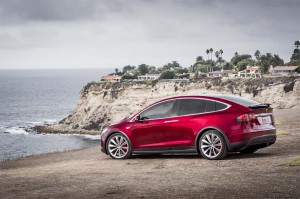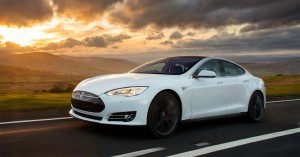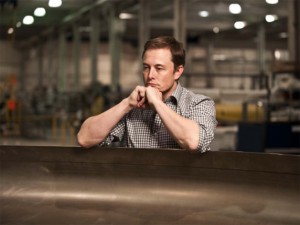Tesla Motors saw third-quarter deliveries of its Models S and X battery-electric vehicles surge 70% during the third quarter, a significant improvement over recent quarters that saw the California-based manufacturer fall short of its targets.
Tesla also said that it expects deliveries during the fourth quarter to come in “at or slightly above” the July to September numbers, something that would put the maker on a path to rolling out more than 2,000 of the battery-electric vehicles, or BEVs, each week for the rest of the year.
In turn, company officials have indicated that could translate into a profit for the maker – using non-standard accounting procedures – after some recent, heavy losses.
(Tesla sues to sell cars in Michigan. Click Here for more.)
The carmaker has struggled to boost production since last year’s troubled launch of the Model X electric SUV. The second model in its line-up has been plagued with quality problems – Tesla recently settling a lawsuit against an engineering firm that it blamed for trouble with the Model X gullwing doors. CEO Elon Musk said, earlier this year, that quality would be prioritized over volume.
Production and deliveries of the Model X continues to lag behind that of the Model S battery-sedan. Only about 8,700 of the electric SUVs were put in consumers’ hands during the third quarter compared with 15,800 of the older model.
The third-quarter tally of 25,185 deliveries includes 5,150 vehicles that were actually built during the April-June quarter but which were in transit at that time. Meanwhile, another 5,500 cars built between July and September are now in transit but won’t be counted until the fourth quarter.
The third quarter production total of 25,185 vehicles translates into just about 2,000 Models S and X electric vehicles weekly. Tesla originally had hoped to hit 2,200 BEVs for the quarter and climb to 2,400 for the final three months of the year.
(Mercedes-Benz takes aim at Tesla with new EQ battery-car brand. Click Here for details.)
Meeting production targets would be critical to turning things around after some heavy losses and, in August, Chief Financial Officer Jason Wheeler said that if Tesla can come through it had, “a great chance of being non-GAAP profitable.” Tesla uses a modified accounting procedure, rather than industry standard practices.
Tesla said it lost $293 million, or $2.09 a share, for the April to June quarter. Excluding special one-time items, the loss narrowed to $150 million, or $1.06 a share. But that was still well below Wall Street’s expectations, analysts predicting the maker would lose $0.65 a share.
Tesla has had other problems in recent months, notably including the fatal, May 9 crash of a Model S sedan operating in Autopilot mode in Florida. A second death possibly involving Autopilot was recently reported in China, though it has not been confirmed whether the semi-autonomous system was operating at the time.
Tesla CEO Elon Musk last month said the maker would be upgrading the technology before the end of the year.
Tesla has also been embroiled in controversy involving the planned acquisition of solar panel company Solar City.
The maker, meanwhile, is moving forward on the construction of its big Gigafactory battery plant in Nevada. The Reno facility will be a key supplier not only to Tesla vehicles but for the company’s battery backup business. Tesla last month announced a major deal to provide high-power utility system backup devices.
Financial analysts have been debating Tesla’s plans and stock price, but the key to the maker’s long-term performance is expected to be the roll-out of the Model 3, the company’s first mainstream, long-range battery-electric vehicle. Musk has said it would be in production sometime during the second half of next year, also predicting total Tesla production would push into the 500,000 range by 2018. Considering the company’s history of missing targets, that will be a tall goal to reach, but a critical one.
(VW introduces long-range I.D. battery-car at Paris Motor Show. Click Here to check it out.)



